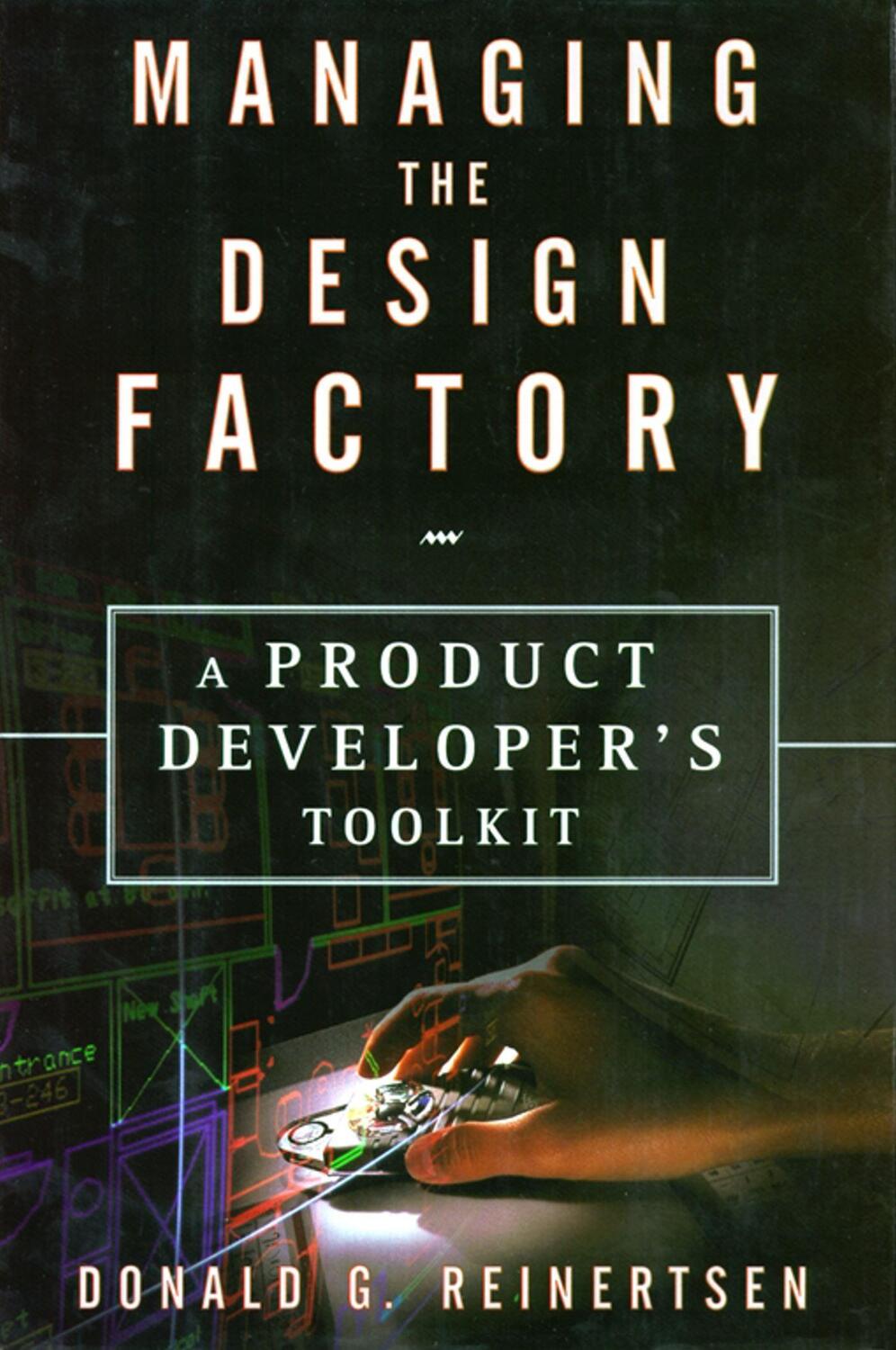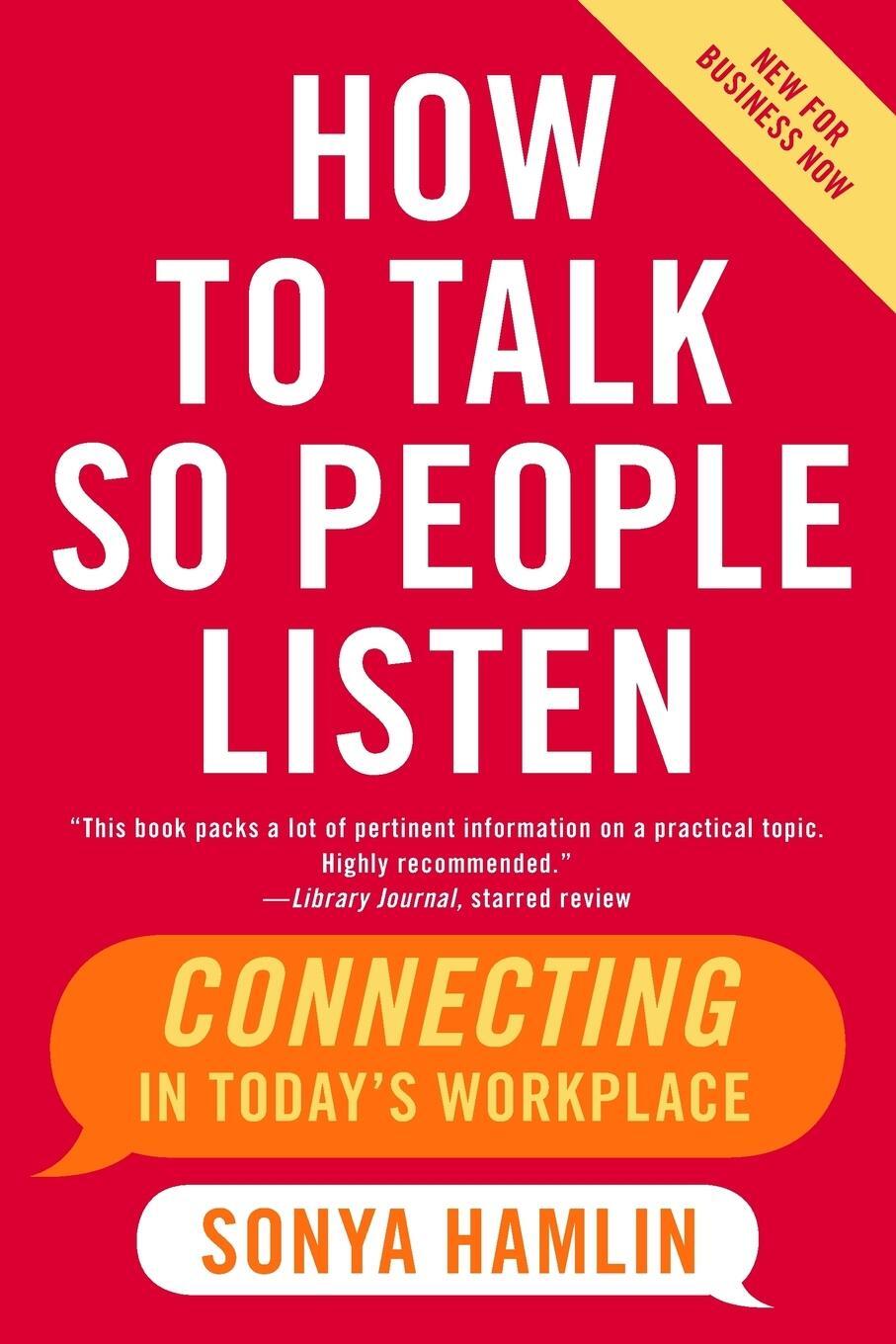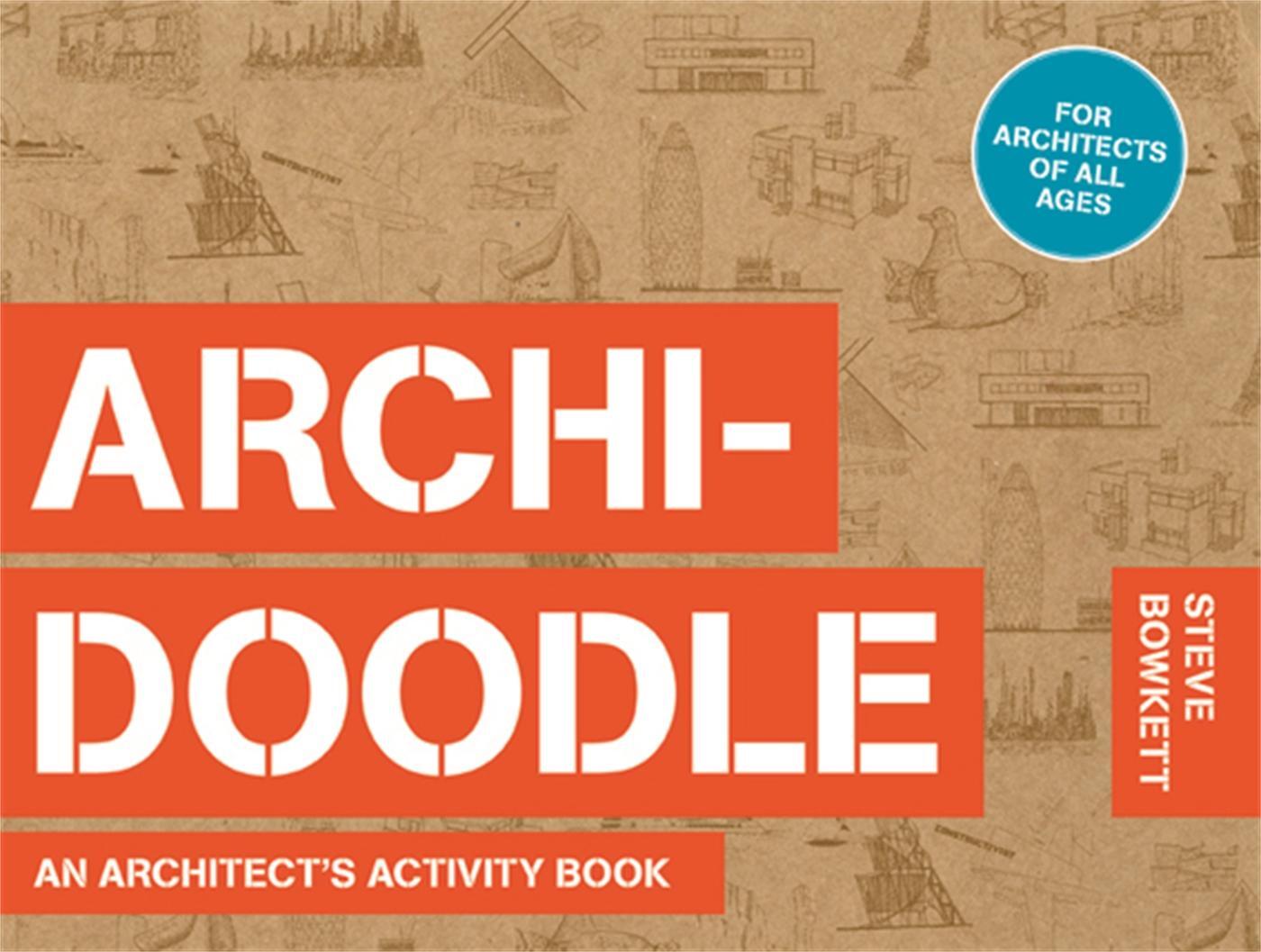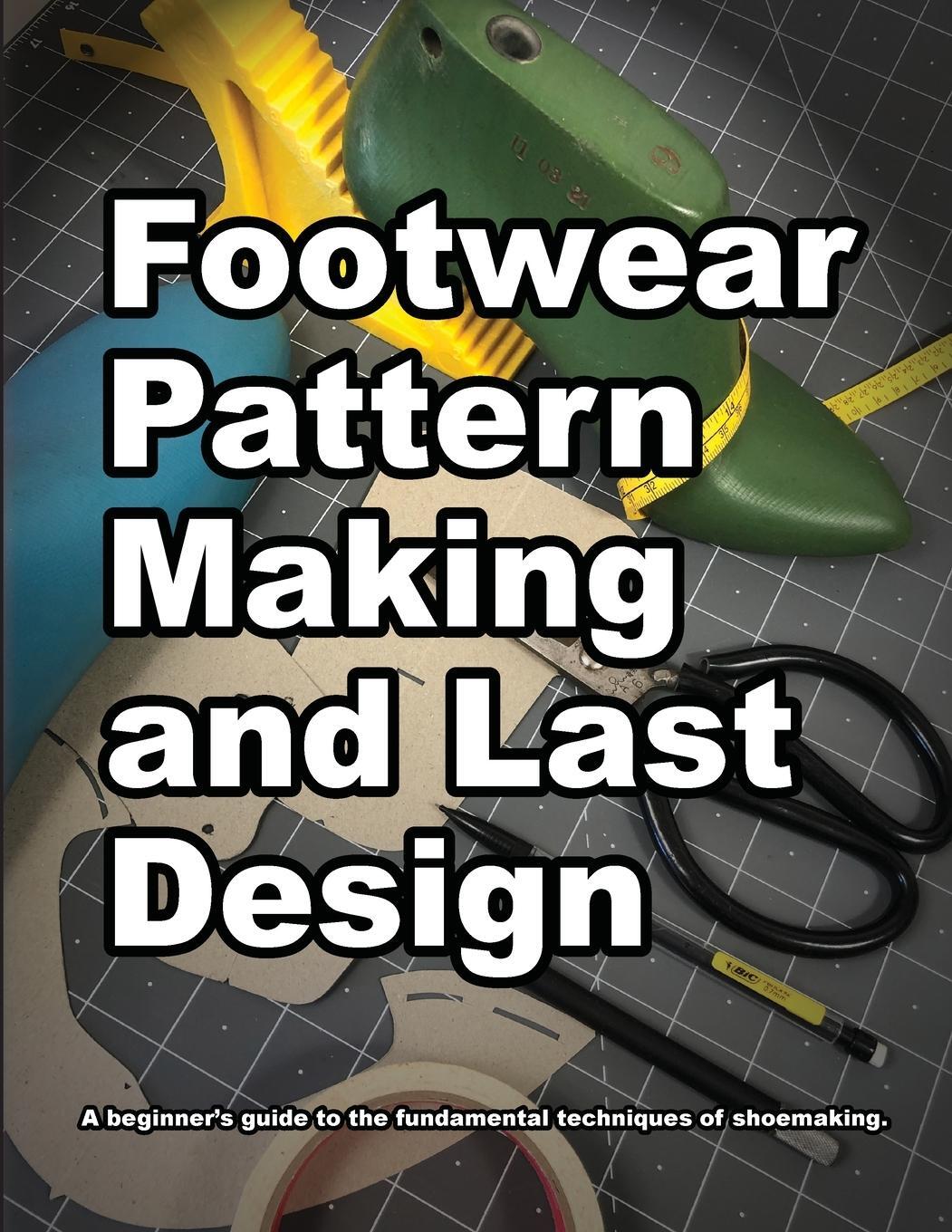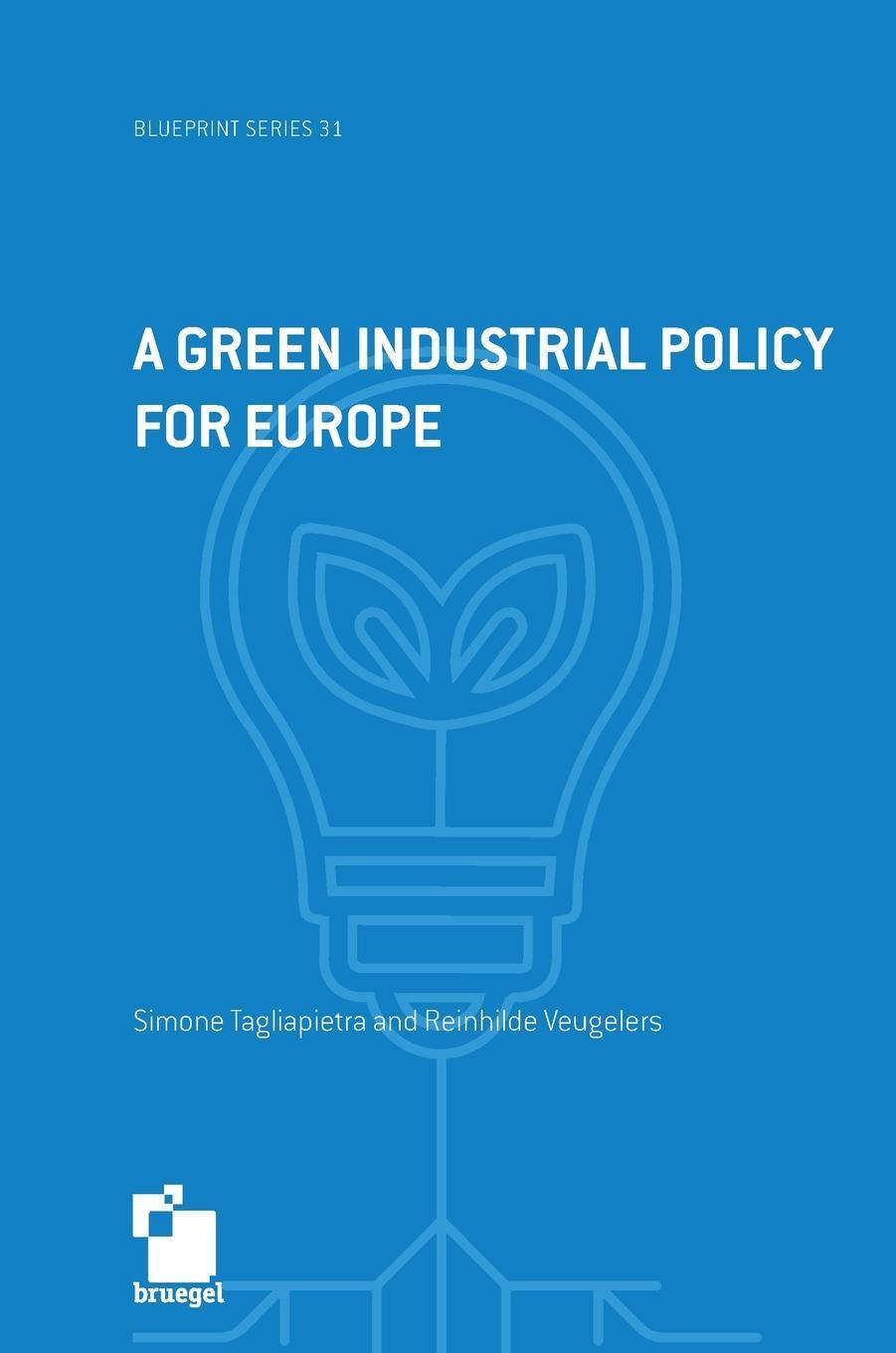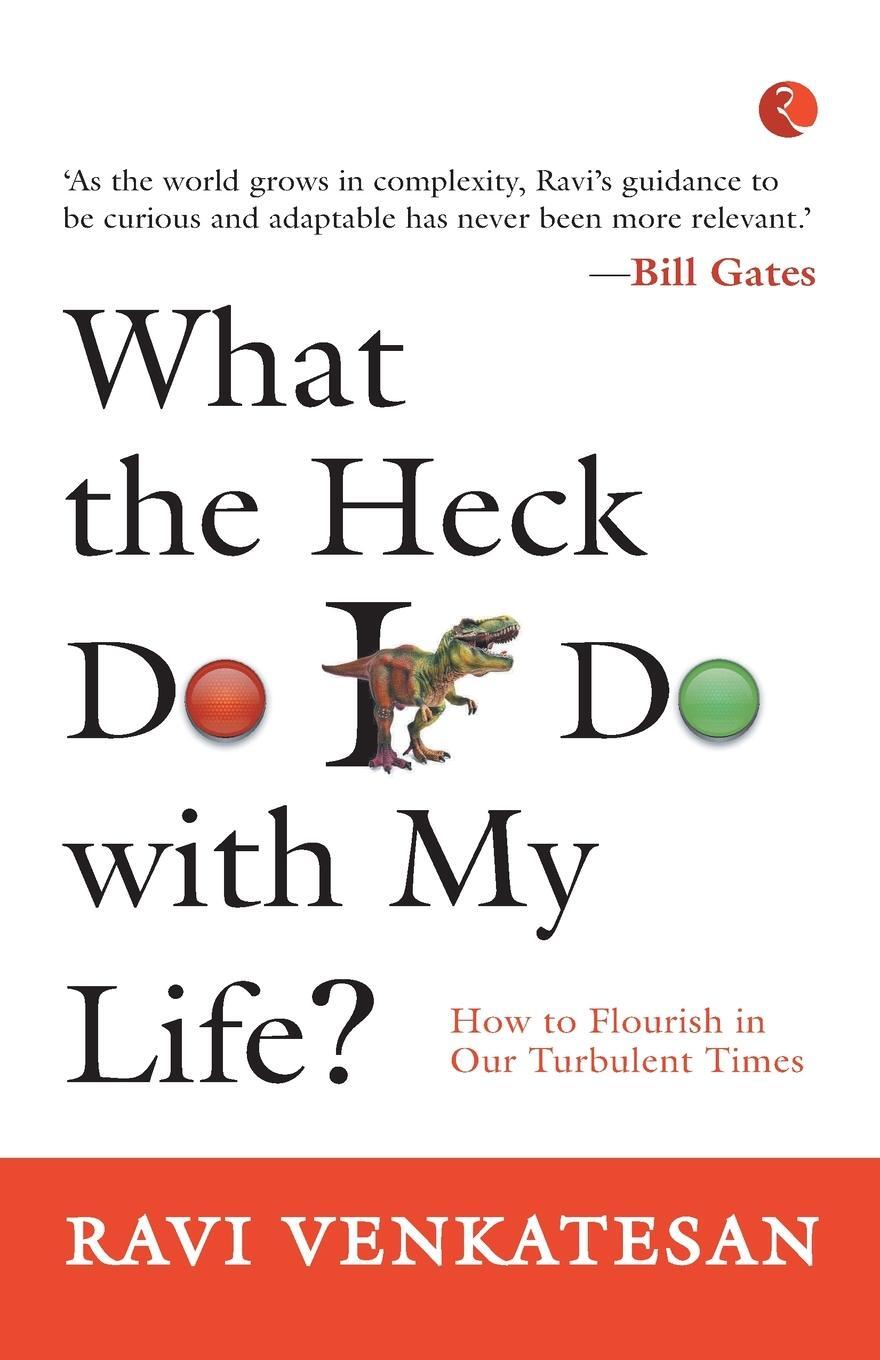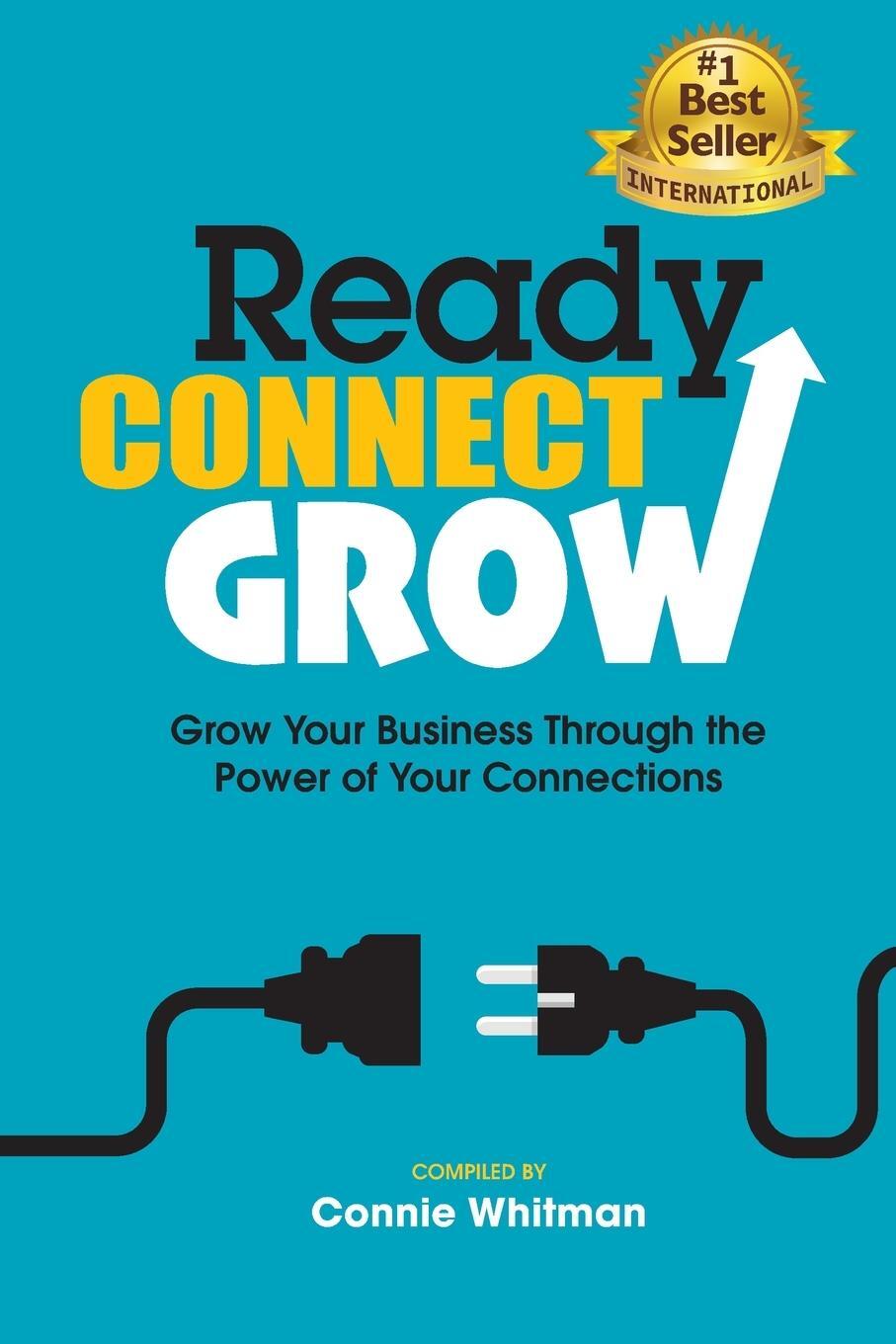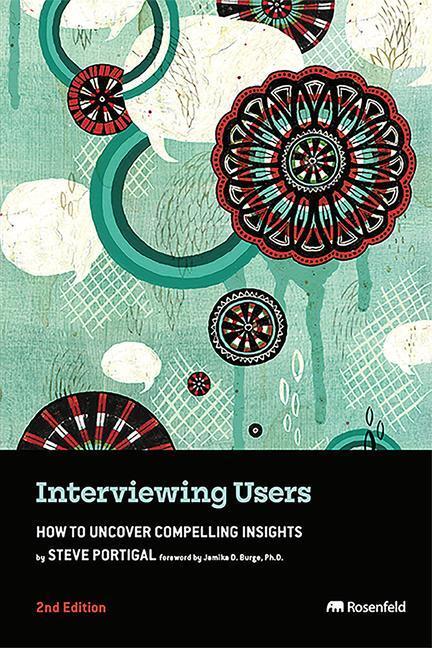Dekorationsartikel gehören nicht zum Leistungsumfang.
Sprache:
Englisch
35,50 €*
Versandkostenfrei per Post / DHL
Aktuell nicht verfügbar
Kategorien:
Beschreibung
The first book to put the principles of World Class Manufacturing to work in the development process, Managing the Design Factory combines the powerful analytical tools of queuing, information, and system theories with the proven ideas of organization design and risk management. The result: a methodical approach to consistently hit the "sweet spot" of quality, cost, and time in developing any product. Reinertsen illustrates these concepts with concrete examples drawn from his work with many leading companies across different industries. Unlike other books that promote rules and rituals based on benchmarking "best practices", this book focuses on practical tools that account for varied situations. He breaks new ground with a disciplined, quantitative approach for making decisions on critical issues: When should we use a sequential or concurrent process? Centralized or decentralized control? Functional or team organizations? Full of practical techniques, concrete examples, and solid general principles, this is a real toolkit for product developers.
The first book to put the principles of World Class Manufacturing to work in the development process, Managing the Design Factory combines the powerful analytical tools of queuing, information, and system theories with the proven ideas of organization design and risk management. The result: a methodical approach to consistently hit the "sweet spot" of quality, cost, and time in developing any product. Reinertsen illustrates these concepts with concrete examples drawn from his work with many leading companies across different industries. Unlike other books that promote rules and rituals based on benchmarking "best practices", this book focuses on practical tools that account for varied situations. He breaks new ground with a disciplined, quantitative approach for making decisions on critical issues: When should we use a sequential or concurrent process? Centralized or decentralized control? Functional or team organizations? Full of practical techniques, concrete examples, and solid general principles, this is a real toolkit for product developers.
Über den Autor
Donald G. Reinertsen is head of Reinertsen & Associates, a firm that specializes in new product development. He also teaches at the California Institute of Technology and has attracted a worldwide following among managers, designers, and engineers. He holds an engineering degree from Cornell and an MBA from Harvard. He and his family live in Redondo Beach, California.
Inhaltsverzeichnis
INTRODUCTION
Revolution in the Factory
Into the Witch Doctor's Tent
There Are No Best Practices
Where Ideas Come From
The Organization of This Book
PART ONE: THE DESIGN FACTORY
1. INTO THE DESIGN FACTORY
Our Goals Are Economic
Products vs. Designs
Design-in-Process Inventory
Rising Cost of Change
Late-Breaking News
One-Time Processes
Expanding Work
Summary
PART TWO: THINKING TOOLS
2. MAKING PROFITS NOT PRODUCTS
Project Models
Application Models
Models of Process Economics
Tactical vs. Strategic Decisions
Some Practical Tips
Summary
3.ENTERING THE LAND OF QUEUES
An Introduction to Queueing Theory
The Economics of Queues
Depicting Queues
Implications of Queuing Theory
Dealing with Queues
Increasing Capacity / Managing Demand / Reducing Variability / Using Control Systems
The Location of Batch Queues
Little's Law
Typical Queues
Summary
4. IT'S ALL ABOUT INFORMATION
Information Theory
Efficient Generation of Information
Maximizing Information: The Magic Number 50 Percent
Information Differs in Value
Timing: Earlier Is Better / Batch Size Affects Timing / Iterations Generate Early Information / The Potential Profit Impact
Do It Right the First Time?
Communicating Failures
Protecting Against Failure
Task Sequencing
Monitoring
Summary
5. JUST ADD FEEDBACK
Systems Theory
Systems with Feedback
Properties of Systems with Feedback
Difficulty in Troubleshooting / Instability and Chaos / Accuracy and Feedback / Variability Within a System
More Complex Control Systems
Summary
PART THREE: ACTION TOOLS
6. CHOOSE THE RIGHT ORGANIZATION
The Organization as a System
Assessing Organizational Forms
Efficiency: The Functional Organization
Speed: The Autonomous Team
Performance and Cost: Hybrid Organizations
Dividing Responsibilities
Communications
Old Communications Tools / New Communications Technologies
Colocation
Summary
7. DESIGN THE DESIGN PROCESS
Combining Structure and Freedom
One-Time Processes / Modular Processes / A Pattern Language
Designing Process Stages
Input Subprocesses / Technology vs. Product Development / Controlling Queues / Subprocess Design / Output Processes
Key Design Principles
Sequential vs. Concurrent Processes / Managing Information Profiles / Decentralizing Control and Feedback / Location of Batch Queues
Specific Process Implementations
Evolving the Process
Summary
8. PRODUCT ARCHITECTURE: THE INVISIBLE DESIGN
Underlying Principles
Modularity Segregating Variability/ Interface Management
Specific Architectural Implementations
Low-Expense Architectures / Low-Cost Architectures / High-Performance Architectures / Fast-Development Architectures
Who Does It?
Summary
9. GET THE PRODUCT SPECIFICATION RIGHT
It Starts with Strategy
Selecting the Customer
Understanding the Customer
Customer Interviews / Meticulous Observation / Focus Groups
Creating a Good Specification
The Minimalist Specification / A Product Mission / The Specification Process
Using the Specification
Specific Implementations
Summary
10. USE THE RIGHT TOOLS
The Use of Technology
Accelerated Information Flow / Improved Productivity / Reduced Delays
Implementation Principles
Technology Changes Process / Pay Attention to Economics Technologies
Design Automation / Prototyping and Testing / Communications / Information Storage and Retrieval
Summary
11. MEASURE THE RIGHT THINGS
General Principles
Drive Metrics from Economics / The Control Triangle / Decentralizing Control / Selecting Metrics
Project-Level Controls
Expense-Focused Controls / Cost-Focused Controls / Performance-Focused Controls / Speed-Focused Controls
Business Level Controls
Expense-Focused Controls / Cost-Focused Controls / Performance-Focused Controls / Speed-Focused Controls
Summary
12. MANAGE UNCERTAINTY AND RISK
Market and Technical Risk
Managing Market Risk
Use a Substitute Product / Simulate the Risky Attribute / Make the Design Flexible / Move Fast
Managing Technical Risk
Controlling Subsystem Risk / Controlling System Integration Risk / Back-up Plans
World-Class Testing
Cheap Testing / Low Unit Cost Impact/Maximizing Performance / Fast Testing / Continuous Improvement
Summary
PART FOUR: NEXT STEPS
13. NOW WHAT DO I DO?
Do Your Math
Use Decision Rules
Pay Attention to Capacity Utilization
Pay Attention to Batch Size
Respect Variability
Think Clearly About Risk
Think Systems
Respect the People
Design the Process Thoughtfully
Pay Attention to Architecture
Deeply Understand the Customer
Eliminate Useless Controls
Get to the Front Lines
Avoid Slogans
Selected Bibliography
Index
About the Author
Revolution in the Factory
Into the Witch Doctor's Tent
There Are No Best Practices
Where Ideas Come From
The Organization of This Book
PART ONE: THE DESIGN FACTORY
1. INTO THE DESIGN FACTORY
Our Goals Are Economic
Products vs. Designs
Design-in-Process Inventory
Rising Cost of Change
Late-Breaking News
One-Time Processes
Expanding Work
Summary
PART TWO: THINKING TOOLS
2. MAKING PROFITS NOT PRODUCTS
Project Models
Application Models
Models of Process Economics
Tactical vs. Strategic Decisions
Some Practical Tips
Summary
3.ENTERING THE LAND OF QUEUES
An Introduction to Queueing Theory
The Economics of Queues
Depicting Queues
Implications of Queuing Theory
Dealing with Queues
Increasing Capacity / Managing Demand / Reducing Variability / Using Control Systems
The Location of Batch Queues
Little's Law
Typical Queues
Summary
4. IT'S ALL ABOUT INFORMATION
Information Theory
Efficient Generation of Information
Maximizing Information: The Magic Number 50 Percent
Information Differs in Value
Timing: Earlier Is Better / Batch Size Affects Timing / Iterations Generate Early Information / The Potential Profit Impact
Do It Right the First Time?
Communicating Failures
Protecting Against Failure
Task Sequencing
Monitoring
Summary
5. JUST ADD FEEDBACK
Systems Theory
Systems with Feedback
Properties of Systems with Feedback
Difficulty in Troubleshooting / Instability and Chaos / Accuracy and Feedback / Variability Within a System
More Complex Control Systems
Summary
PART THREE: ACTION TOOLS
6. CHOOSE THE RIGHT ORGANIZATION
The Organization as a System
Assessing Organizational Forms
Efficiency: The Functional Organization
Speed: The Autonomous Team
Performance and Cost: Hybrid Organizations
Dividing Responsibilities
Communications
Old Communications Tools / New Communications Technologies
Colocation
Summary
7. DESIGN THE DESIGN PROCESS
Combining Structure and Freedom
One-Time Processes / Modular Processes / A Pattern Language
Designing Process Stages
Input Subprocesses / Technology vs. Product Development / Controlling Queues / Subprocess Design / Output Processes
Key Design Principles
Sequential vs. Concurrent Processes / Managing Information Profiles / Decentralizing Control and Feedback / Location of Batch Queues
Specific Process Implementations
Evolving the Process
Summary
8. PRODUCT ARCHITECTURE: THE INVISIBLE DESIGN
Underlying Principles
Modularity Segregating Variability/ Interface Management
Specific Architectural Implementations
Low-Expense Architectures / Low-Cost Architectures / High-Performance Architectures / Fast-Development Architectures
Who Does It?
Summary
9. GET THE PRODUCT SPECIFICATION RIGHT
It Starts with Strategy
Selecting the Customer
Understanding the Customer
Customer Interviews / Meticulous Observation / Focus Groups
Creating a Good Specification
The Minimalist Specification / A Product Mission / The Specification Process
Using the Specification
Specific Implementations
Summary
10. USE THE RIGHT TOOLS
The Use of Technology
Accelerated Information Flow / Improved Productivity / Reduced Delays
Implementation Principles
Technology Changes Process / Pay Attention to Economics Technologies
Design Automation / Prototyping and Testing / Communications / Information Storage and Retrieval
Summary
11. MEASURE THE RIGHT THINGS
General Principles
Drive Metrics from Economics / The Control Triangle / Decentralizing Control / Selecting Metrics
Project-Level Controls
Expense-Focused Controls / Cost-Focused Controls / Performance-Focused Controls / Speed-Focused Controls
Business Level Controls
Expense-Focused Controls / Cost-Focused Controls / Performance-Focused Controls / Speed-Focused Controls
Summary
12. MANAGE UNCERTAINTY AND RISK
Market and Technical Risk
Managing Market Risk
Use a Substitute Product / Simulate the Risky Attribute / Make the Design Flexible / Move Fast
Managing Technical Risk
Controlling Subsystem Risk / Controlling System Integration Risk / Back-up Plans
World-Class Testing
Cheap Testing / Low Unit Cost Impact/Maximizing Performance / Fast Testing / Continuous Improvement
Summary
PART FOUR: NEXT STEPS
13. NOW WHAT DO I DO?
Do Your Math
Use Decision Rules
Pay Attention to Capacity Utilization
Pay Attention to Batch Size
Respect Variability
Think Clearly About Risk
Think Systems
Respect the People
Design the Process Thoughtfully
Pay Attention to Architecture
Deeply Understand the Customer
Eliminate Useless Controls
Get to the Front Lines
Avoid Slogans
Selected Bibliography
Index
About the Author
Details
| Erscheinungsjahr: | 1997 |
|---|---|
| Fachbereich: | Betriebswirtschaft |
| Genre: | Wirtschaft |
| Rubrik: | Recht & Wirtschaft |
| Medium: | Buch |
| Seiten: | 288 |
| ISBN-13: | 9780684839912 |
| ISBN-10: | 0684839911 |
| Sprache: | Englisch |
| Einband: | Gebunden |
| Autor: | Reinertsen, Donald |
| Hersteller: | Free Press |
| Maße: | 242 x 163 x 25 mm |
| Von/Mit: | Donald Reinertsen |
| Erscheinungsdatum: | 10.1997 |
| Gewicht: | 0,471 kg |
Über den Autor
Donald G. Reinertsen is head of Reinertsen & Associates, a firm that specializes in new product development. He also teaches at the California Institute of Technology and has attracted a worldwide following among managers, designers, and engineers. He holds an engineering degree from Cornell and an MBA from Harvard. He and his family live in Redondo Beach, California.
Inhaltsverzeichnis
INTRODUCTION
Revolution in the Factory
Into the Witch Doctor's Tent
There Are No Best Practices
Where Ideas Come From
The Organization of This Book
PART ONE: THE DESIGN FACTORY
1. INTO THE DESIGN FACTORY
Our Goals Are Economic
Products vs. Designs
Design-in-Process Inventory
Rising Cost of Change
Late-Breaking News
One-Time Processes
Expanding Work
Summary
PART TWO: THINKING TOOLS
2. MAKING PROFITS NOT PRODUCTS
Project Models
Application Models
Models of Process Economics
Tactical vs. Strategic Decisions
Some Practical Tips
Summary
3.ENTERING THE LAND OF QUEUES
An Introduction to Queueing Theory
The Economics of Queues
Depicting Queues
Implications of Queuing Theory
Dealing with Queues
Increasing Capacity / Managing Demand / Reducing Variability / Using Control Systems
The Location of Batch Queues
Little's Law
Typical Queues
Summary
4. IT'S ALL ABOUT INFORMATION
Information Theory
Efficient Generation of Information
Maximizing Information: The Magic Number 50 Percent
Information Differs in Value
Timing: Earlier Is Better / Batch Size Affects Timing / Iterations Generate Early Information / The Potential Profit Impact
Do It Right the First Time?
Communicating Failures
Protecting Against Failure
Task Sequencing
Monitoring
Summary
5. JUST ADD FEEDBACK
Systems Theory
Systems with Feedback
Properties of Systems with Feedback
Difficulty in Troubleshooting / Instability and Chaos / Accuracy and Feedback / Variability Within a System
More Complex Control Systems
Summary
PART THREE: ACTION TOOLS
6. CHOOSE THE RIGHT ORGANIZATION
The Organization as a System
Assessing Organizational Forms
Efficiency: The Functional Organization
Speed: The Autonomous Team
Performance and Cost: Hybrid Organizations
Dividing Responsibilities
Communications
Old Communications Tools / New Communications Technologies
Colocation
Summary
7. DESIGN THE DESIGN PROCESS
Combining Structure and Freedom
One-Time Processes / Modular Processes / A Pattern Language
Designing Process Stages
Input Subprocesses / Technology vs. Product Development / Controlling Queues / Subprocess Design / Output Processes
Key Design Principles
Sequential vs. Concurrent Processes / Managing Information Profiles / Decentralizing Control and Feedback / Location of Batch Queues
Specific Process Implementations
Evolving the Process
Summary
8. PRODUCT ARCHITECTURE: THE INVISIBLE DESIGN
Underlying Principles
Modularity Segregating Variability/ Interface Management
Specific Architectural Implementations
Low-Expense Architectures / Low-Cost Architectures / High-Performance Architectures / Fast-Development Architectures
Who Does It?
Summary
9. GET THE PRODUCT SPECIFICATION RIGHT
It Starts with Strategy
Selecting the Customer
Understanding the Customer
Customer Interviews / Meticulous Observation / Focus Groups
Creating a Good Specification
The Minimalist Specification / A Product Mission / The Specification Process
Using the Specification
Specific Implementations
Summary
10. USE THE RIGHT TOOLS
The Use of Technology
Accelerated Information Flow / Improved Productivity / Reduced Delays
Implementation Principles
Technology Changes Process / Pay Attention to Economics Technologies
Design Automation / Prototyping and Testing / Communications / Information Storage and Retrieval
Summary
11. MEASURE THE RIGHT THINGS
General Principles
Drive Metrics from Economics / The Control Triangle / Decentralizing Control / Selecting Metrics
Project-Level Controls
Expense-Focused Controls / Cost-Focused Controls / Performance-Focused Controls / Speed-Focused Controls
Business Level Controls
Expense-Focused Controls / Cost-Focused Controls / Performance-Focused Controls / Speed-Focused Controls
Summary
12. MANAGE UNCERTAINTY AND RISK
Market and Technical Risk
Managing Market Risk
Use a Substitute Product / Simulate the Risky Attribute / Make the Design Flexible / Move Fast
Managing Technical Risk
Controlling Subsystem Risk / Controlling System Integration Risk / Back-up Plans
World-Class Testing
Cheap Testing / Low Unit Cost Impact/Maximizing Performance / Fast Testing / Continuous Improvement
Summary
PART FOUR: NEXT STEPS
13. NOW WHAT DO I DO?
Do Your Math
Use Decision Rules
Pay Attention to Capacity Utilization
Pay Attention to Batch Size
Respect Variability
Think Clearly About Risk
Think Systems
Respect the People
Design the Process Thoughtfully
Pay Attention to Architecture
Deeply Understand the Customer
Eliminate Useless Controls
Get to the Front Lines
Avoid Slogans
Selected Bibliography
Index
About the Author
Revolution in the Factory
Into the Witch Doctor's Tent
There Are No Best Practices
Where Ideas Come From
The Organization of This Book
PART ONE: THE DESIGN FACTORY
1. INTO THE DESIGN FACTORY
Our Goals Are Economic
Products vs. Designs
Design-in-Process Inventory
Rising Cost of Change
Late-Breaking News
One-Time Processes
Expanding Work
Summary
PART TWO: THINKING TOOLS
2. MAKING PROFITS NOT PRODUCTS
Project Models
Application Models
Models of Process Economics
Tactical vs. Strategic Decisions
Some Practical Tips
Summary
3.ENTERING THE LAND OF QUEUES
An Introduction to Queueing Theory
The Economics of Queues
Depicting Queues
Implications of Queuing Theory
Dealing with Queues
Increasing Capacity / Managing Demand / Reducing Variability / Using Control Systems
The Location of Batch Queues
Little's Law
Typical Queues
Summary
4. IT'S ALL ABOUT INFORMATION
Information Theory
Efficient Generation of Information
Maximizing Information: The Magic Number 50 Percent
Information Differs in Value
Timing: Earlier Is Better / Batch Size Affects Timing / Iterations Generate Early Information / The Potential Profit Impact
Do It Right the First Time?
Communicating Failures
Protecting Against Failure
Task Sequencing
Monitoring
Summary
5. JUST ADD FEEDBACK
Systems Theory
Systems with Feedback
Properties of Systems with Feedback
Difficulty in Troubleshooting / Instability and Chaos / Accuracy and Feedback / Variability Within a System
More Complex Control Systems
Summary
PART THREE: ACTION TOOLS
6. CHOOSE THE RIGHT ORGANIZATION
The Organization as a System
Assessing Organizational Forms
Efficiency: The Functional Organization
Speed: The Autonomous Team
Performance and Cost: Hybrid Organizations
Dividing Responsibilities
Communications
Old Communications Tools / New Communications Technologies
Colocation
Summary
7. DESIGN THE DESIGN PROCESS
Combining Structure and Freedom
One-Time Processes / Modular Processes / A Pattern Language
Designing Process Stages
Input Subprocesses / Technology vs. Product Development / Controlling Queues / Subprocess Design / Output Processes
Key Design Principles
Sequential vs. Concurrent Processes / Managing Information Profiles / Decentralizing Control and Feedback / Location of Batch Queues
Specific Process Implementations
Evolving the Process
Summary
8. PRODUCT ARCHITECTURE: THE INVISIBLE DESIGN
Underlying Principles
Modularity Segregating Variability/ Interface Management
Specific Architectural Implementations
Low-Expense Architectures / Low-Cost Architectures / High-Performance Architectures / Fast-Development Architectures
Who Does It?
Summary
9. GET THE PRODUCT SPECIFICATION RIGHT
It Starts with Strategy
Selecting the Customer
Understanding the Customer
Customer Interviews / Meticulous Observation / Focus Groups
Creating a Good Specification
The Minimalist Specification / A Product Mission / The Specification Process
Using the Specification
Specific Implementations
Summary
10. USE THE RIGHT TOOLS
The Use of Technology
Accelerated Information Flow / Improved Productivity / Reduced Delays
Implementation Principles
Technology Changes Process / Pay Attention to Economics Technologies
Design Automation / Prototyping and Testing / Communications / Information Storage and Retrieval
Summary
11. MEASURE THE RIGHT THINGS
General Principles
Drive Metrics from Economics / The Control Triangle / Decentralizing Control / Selecting Metrics
Project-Level Controls
Expense-Focused Controls / Cost-Focused Controls / Performance-Focused Controls / Speed-Focused Controls
Business Level Controls
Expense-Focused Controls / Cost-Focused Controls / Performance-Focused Controls / Speed-Focused Controls
Summary
12. MANAGE UNCERTAINTY AND RISK
Market and Technical Risk
Managing Market Risk
Use a Substitute Product / Simulate the Risky Attribute / Make the Design Flexible / Move Fast
Managing Technical Risk
Controlling Subsystem Risk / Controlling System Integration Risk / Back-up Plans
World-Class Testing
Cheap Testing / Low Unit Cost Impact/Maximizing Performance / Fast Testing / Continuous Improvement
Summary
PART FOUR: NEXT STEPS
13. NOW WHAT DO I DO?
Do Your Math
Use Decision Rules
Pay Attention to Capacity Utilization
Pay Attention to Batch Size
Respect Variability
Think Clearly About Risk
Think Systems
Respect the People
Design the Process Thoughtfully
Pay Attention to Architecture
Deeply Understand the Customer
Eliminate Useless Controls
Get to the Front Lines
Avoid Slogans
Selected Bibliography
Index
About the Author
Details
| Erscheinungsjahr: | 1997 |
|---|---|
| Fachbereich: | Betriebswirtschaft |
| Genre: | Wirtschaft |
| Rubrik: | Recht & Wirtschaft |
| Medium: | Buch |
| Seiten: | 288 |
| ISBN-13: | 9780684839912 |
| ISBN-10: | 0684839911 |
| Sprache: | Englisch |
| Einband: | Gebunden |
| Autor: | Reinertsen, Donald |
| Hersteller: | Free Press |
| Maße: | 242 x 163 x 25 mm |
| Von/Mit: | Donald Reinertsen |
| Erscheinungsdatum: | 10.1997 |
| Gewicht: | 0,471 kg |
Warnhinweis

